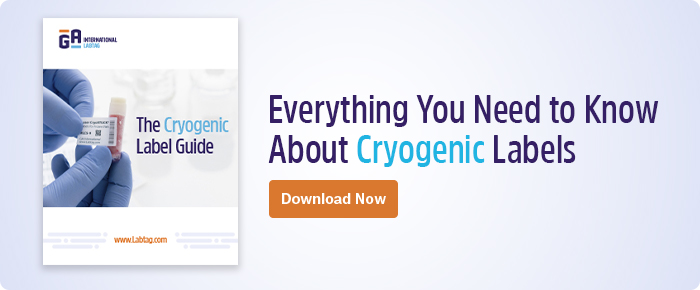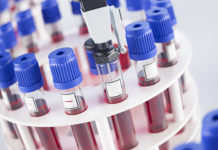 Labs have been using cryogenics for years to store human and animal tissue samples, cell lines, and extracts. Freezing ultimately helps preserve these samples, but for large organisms, freezing can be lethal. Here, we’ll review the current state of knowledge behind the science of cryogenics, from what happens when we freeze cells, the strategies scientists use to help tissues and organs survive the freezing process, and how nature has adapted to cope with freeze/thaw cycles.
Labs have been using cryogenics for years to store human and animal tissue samples, cell lines, and extracts. Freezing ultimately helps preserve these samples, but for large organisms, freezing can be lethal. Here, we’ll review the current state of knowledge behind the science of cryogenics, from what happens when we freeze cells, the strategies scientists use to help tissues and organs survive the freezing process, and how nature has adapted to cope with freeze/thaw cycles.
What happens when cells freeze?
Liquid water normally exists as a network of molecules bound together by hydrogen bonds. Once water begins to freeze, it develops into an open lattice network consisting of six interacting molecules, forming the “hexagonal ice” that is encountered throughout nature in ice and snowflakes. Ice formation needs a nucleation event to occur, which involves the arrangement of a small number of molecules into a crystalline solid upon which new particles can be deposited. Nucleation can occur in one of two forms: heterogeneous nucleation or homogeneous nucleation. Heterogeneous nucleation involves the formation of ice around a nucleation site, usually an impurity in the water, like salt or an irregularity in the container, whereas homogenous nucleation, which occurs in pure water frozen at around –40°C, doesn’t require a nucleation site.1
So, what happens when cells freeze? Solutes—molecules that are dissolved in water—are normally excluded from ice crystals, as are cells. Because cells have no nucleation sites, they can be supercooled down to –40°C. Thus, the extracellular solution freezes first, producing ice and concentrating the remaining solution around the cells. This generates an osmotic stress as the solute concentration increases around the cells, resulting in dehydration. However, ice can form inside cells when the size of the ice particles formed during cooling is small enough to pass into the cell, when the contents of the cell itself spontaneously freeze, or when injury from osmotic stress lets ice form inside the cell. All of these processes ultimately lead to irreversible cellular damage.2
Freezing human tissues and organs
Ideally, the freezing of cells should occur without osmotic stress or the formation of ice inside the cells. This can be done using a process called vitrification, which involves lowering the freezing point using a high concentration of solutes, making the solution viscous at low temperatures, enough so that it becomes a glass-like.2 Many compounds, termed cryoprotectants, have been exploited for this purpose.1 Dimethyl sulfoxide (DMSO) is one of the most common cryoprotectants, as it quickly penetrates most cells with minimal toxicity. Glycerol is another frequently used nontoxic cryoprotectant but permeates cells much slower than DMSO. Sugar and salt have similar effects, and while they are exceptionally nontoxic, they are not as big as DMSO or glycerol, which offer more protection against osmotic stress.2
While cryoprotectants are primarily used for cell suspensions, organs and tissues can be also be frozen without too much injury. Glycerol and DMSO have previously been used to freeze skin tissues, while blood vessels can be frozen with a mixture of DMSO, propanediol, and formamide. However, vitrification of organs is a bit trickier and requires efficient perfusion with the cryoprotectant. Fahy et al were able to successfully freeze and recover rabbit kidneys at –45°C by applying a computer-controlled method of perfusion with a DMSO-based cryoprotectant mixture.1 Other organs that have been successfully frozen and thawed include hearts, pancreatic islets, and ovaries.3
Nature’s Solution
Even with today’s technology, you can’t safely thaw a cryogenically frozen human (though many have already been frozen with the hopes that, one day, science will be able to resuscitate them). However, some complex organisms, like frogs, can undergo freeze/thaw cycles without injury, providing clues about how we can also achieve this in the future. To resist freezing-induced damage, wood frogs reduce their metabolism and raise the concentration of blood glucose to nearly 50 times that of a human diabetic, which serves as a cryoprotectant throughout the body. They also express additional genes that prevent glycation (damage to proteins and other molecules from sugar) and repair leaks in blood vessel walls caused by freeze/thaw cycles, making them perfectly suited to living in both freezing and warm temperatures.
Cryogenics remains one of the most important fields of study in biomedical research. Patient tissue specimens, immortalized cell lines, as well as sperm and eggs, are all commonly frozen for a variety of medical and research purposes. With the field of cryogenics sure to only grow in importance going forward, it is critical to ensure that our understanding of this process grows with it.
LabTAG by GA International is a leading manufacturer of high-performance specialty labels and a supplier of identification solutions used in research and medical labs as well as healthcare institutions.
References:
- Elliott GD, Wang S, Fuller BJ. Cryoprotectants: A review of the actions and applications of cryoprotective solutes that modulate cell recovery from ultra-low temperatures. Cryobiology. 2017;76:74-91.
- Meryman HT. Cryopreservation of living cells: Principles and practice. Transfusion. 2007;47:935-945.
- Liu D, Pan F. Advances in cryopreservation of organs. J Huazhong Univ Sci Technol – Med Sci. 2016;36(2):153-161.




